Ebony: Dark Outlook For Dark Woods?
Share
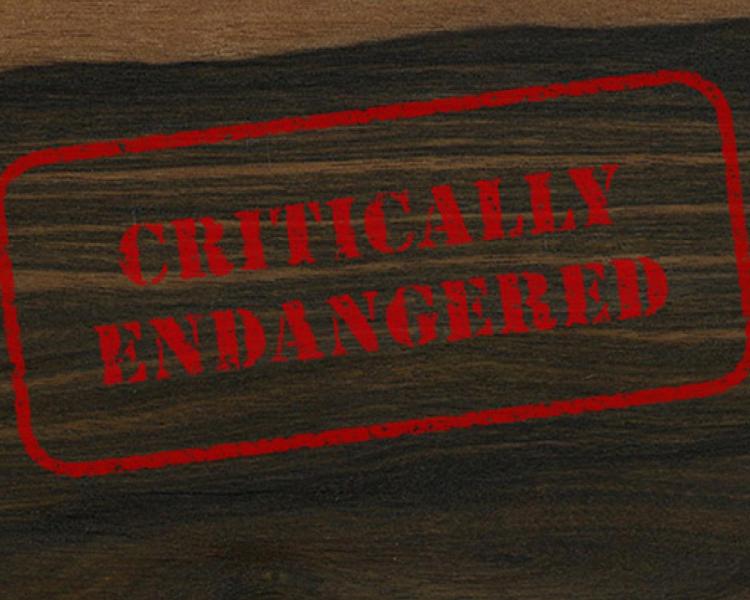
Why should I care?
Maybe you shouldn’t. But at the very least, everyone who buys, uses or makes ebony wood products should be aware of the situation, and make informed, conscientious decisions. Maybe you’ve only used a little bit of ebony here and there, but just remember this: the world is filled with small bits and pieces of ebony. This is precisely what ebony is used for. No one is going to make an enormous office table out of solid ebony, but that same office table may very well feature a custom inlay made of ebony. More often than not, ebony is used bit by bit, and you might be the one using that next bit.
(On a personal note, I am a woodworker myself, and yes, I have bought and used ebony for a variety of projects in the past. Was I aware of the scope of the situation surrounding ebony at the time? No. Knowing what I know now, would I still buy and use ebony? Maybe… but I would definitely think twice before I went ahead with it for a project. See alternatives below.)
The Issue
The issue isn’t rocket science: ebony trees (in the Diospyros genus) are generally small and slow growing. Demand for ebony wood is very high: it’s a high quality hardwood that’s very hard, very strong, and most of all, very black. Low supply and high demand means prices go way up. These high prices, coupled with the fact that a lot of the world’s ebony grows in third-world countries, only exacerbates the problem. (Take, for example, the illegal logging that occurred in Madagascar, especially in the early 2000s, where people were literally risking life and limb to get rosewood and ebony logs smuggled out from protected national parks.)
Ideally, most modern industrialized nations harvest wood in such a way that it is sustainable. Certain areas are logged at certain rates to ensure that there will still be trees around to harvest and use for tomorrow. But given ebony’s slow growth rate, and the current rate of harvest, it’s easy to see why there’s a dark outlook for these dark woods.
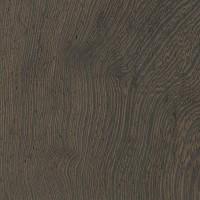
STATUS: ENDANGERED
Wenge is another African hardwood whose natural range largely overlaps that of Gaboon Ebony. Wenge is not related to ebony, but is a very dark wood that turns nearly black when a finish is a applied, and has been considered as a direct replacement to ebony. It is on the IUCN Red List as endangered due to a population reduction of over 50% in the past three generations, caused by a decline in its natural range, and exploitation.
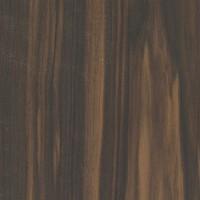
Macassar Ebony (Diospyros celebica)
STATUS: VULNERABLE
So named for the Indonesian port-city of Makassar, which is one of the primary points of exportation. Being a striped variety of ebony, it is not always considered a direct replacement to African ebony species, and is not considered to be as imperiled as other ebonies. It is on the IUCN Red List as vulnerable due to a population reduction of over 20% in the past three generations, caused by a decline in its natural range, and exploitation.
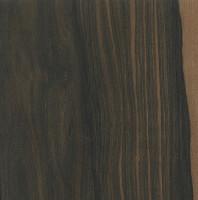
STATUS: CRITICALLY ENDANGERED
One of a handful of ebony species that are native to Asia: more specifically, it’s native to Viet Nam and Laos. Because of exploitation and drastic population reductions, export of this species is currently banned. It is on the IUCN Red List as critically endangered due to a population reduction of over 80% in the past three generations, caused by a decline in its natural range, and exploitation.
Alternatives
In some instances, the desire to use true ebony makes sense, but in many cases, the usage of ebony is needlessly perpetuated out of tradition or habit. If you’re considering ebony in a project, ask yourself these questions:
Is the section one solid piece of wood? More than likely you could dye/stain another wood black and achieve a similar appearance at a fraction of the cost. Black-dyed veneers can also be a good choice for some applications. Oak can be ebonized using a solution of steel wool and vinegar, and multiple applications of commercial ebony-colored stains are effective on a wide range of woods as well. When you use stains, you open up a lot more wood species options, and have more flexibility in terms of ease-of-workability, weight, and stability (ebony isn’t the most stable wood around). Examples: piano keys, solid wood furniture.
Does it really have to be wood? The very best and highest grades of ebony are jet-black—free from any traces of color variations, perceptible grain patterns, or imperfections—ironically making it identical in appearance to black plastic. (And chances are, most laypeople and customers unfamiliar with ebony will have no appreciation for the real-deal anyway.) In small accent pieces and inlays, there’s a number of alternative materials, such as (drumroll, please…) plastic. Examples: guitar binding, inlay strips, knobs.
Does it really need to be jet-black? This should be the dagger. Unless you’re specifically doing a Holly-on-Ebony, black-and-white contrast piece, another dark-colored wood would probably do a better job than ebony at complementing the existing colors on a wood project. In most cases, no, the wood doesn’t have to be jet-black. Consider some of these alternative woods (listed below) to add texture, pattern, and/or color variation in your next project.
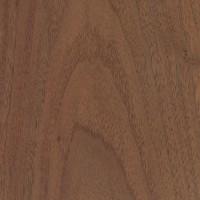
Walnut can lose a lot of color in the kiln-dying process. Air-dried pieces of walnut can have exceptionally rich color with subtle variegations of purple and red mixed within a chocolate-brown background. Not all walnut is created equal, and with a little bit of hunting, some very nice pieces can be found.

Ipe has a lot of color variation between boards, but darker reddish-brown pieces are available. The wood is dense, strong, and economical, though it does pose challenges in gluing. It’s hard on cutting edges and dulls tools quickly, which should help to give you a behind-the-scenes reminder of what true ebony is really like work with.


